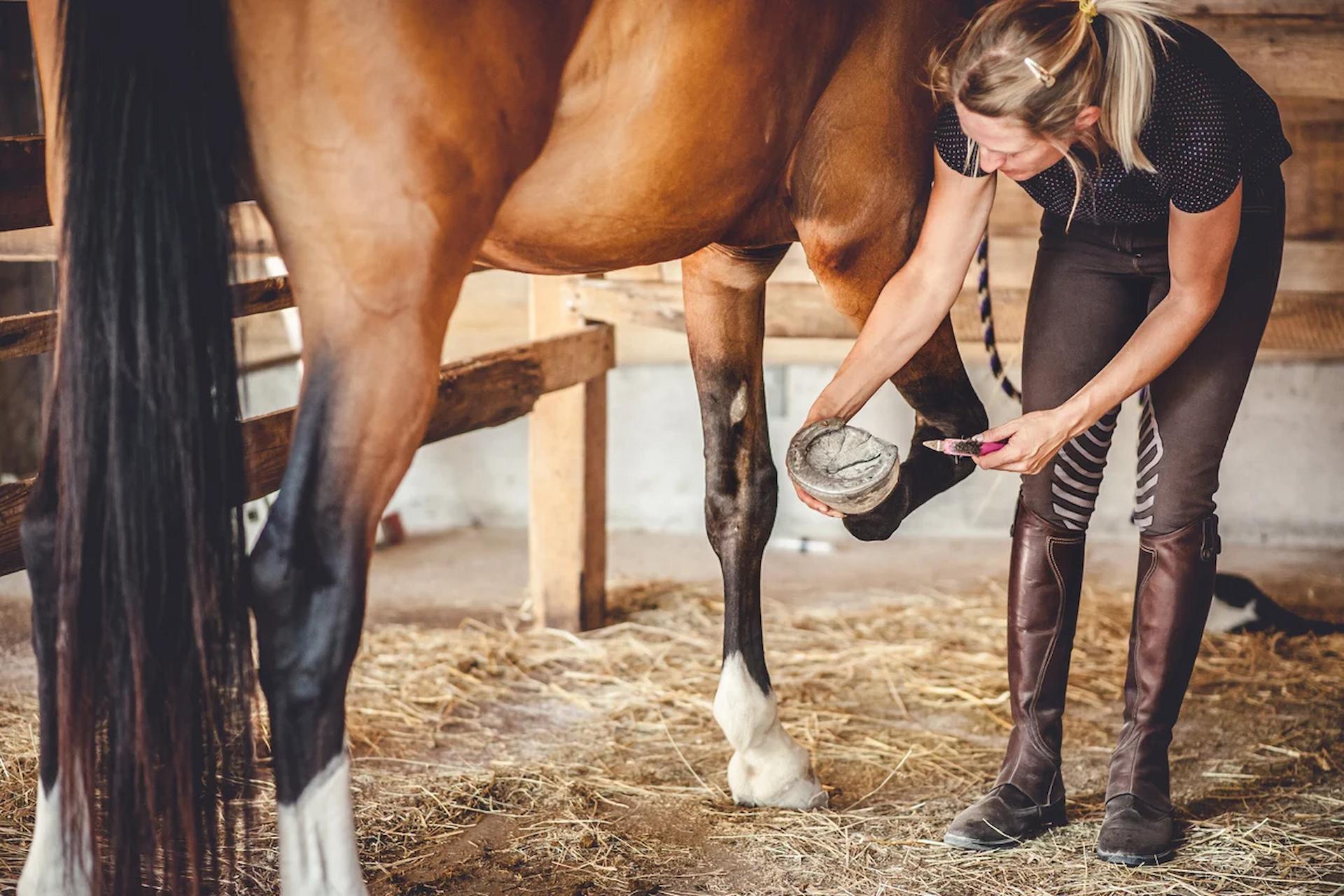
During the winter, horses may require adaptations to their diets to ensure they can keep themselves comfortable and healthy when the cold weather sets in. But what if your horse is prone to laminitis? There are various factors to be aware of when managing a laminitic horse in the winter, including monitoring their sugar and starch intake and taking steps to maintain healthy hooves. We’ll take a closer look at winter nutrition strategies below.
Understanding Laminitis
Laminitis occurs when the sensitive laminae within the hoof – the tissue that attaches the hoof wall to the pedal bone – becomes inflamed. This can cause severe discomfort, which can lead to difficulty walking, as well as structural damage to the hooves. During the winter months, changes in the forage and a reduced exercise program may increase the risk of laminitis occurrence.
Balancing the Diet
Your horse’s diet is a key component when it comes to managing laminitis in the winter months. Providing a vitamin and mineral supplement or balancer all year round will help to ensure your horse is receiving a balanced diet alongside their forage. During the cold weather, plenty of forage should be provided to support digestive health. However, if the restriction is needed for those that are overweight, make sure you are feeding a minimum of 1.5kg of forage per 100kg of body weight per day (on a dry matter basis) to ensure that fibre requirements are still being met. You could also split up your horse’s forage ration into multiple smaller portions to encourage trickle feeding.
Limit Starch and Sugar Intake
Limiting starch and sugar intake is essential when managing the laminitis-prone horse or pony at any time of the year, as high levels may increase the risk of laminitis. Many feed companies offer a forage analysis service to determine the water-soluble carbohydrates (WSCs, which include sugars and fructan) in your forage. Ideally, a WSC level in the forage of 10% or under would be recommended for those prone to laminitis. However, it can be tricky to find forages this low in the UK, so hay can be soaked for up to 8-12 hours to help leech out some WSCs.
You should also limit your horse’s intake of cereal grains and concentrate feeds that are high in starch and sugar, as this may lead to blood sugar spikes, which can increase the risk of laminitis. Maintaining a healthy metabolic state is crucial whilst ensuring your horse has enough energy to support condition and body weight throughout the winter.
Essential Nutrients for Hoof Health
Laminitis directly affects the structure of the hoof, which is why good hoof management is important when managing a horse prone to this condition. Hoof health can be closely linked to nutrition, and ensuring that the diet is supplying sufficient levels of essential nutrients to fortify the hooves and support resilience is crucial – especially in harsh winter conditions. The essential nutrients for hoof health that you should look out for include biotin, methionine, zinc, and omega-3 fatty acids. These nutrients should be provided by feeding recommended levels of a suitable fortified fibre feed or balancer.
Hydration
The risk of dehydration may be increased during the winter, so make sure your horse has access to clean, unfrozen water at all times so that they can drink freely. Your horse may also be more reluctant to drink very cold water, so you could add some warm water to encourage them to stay hydrated.
Shelter and Exercise
It’s essential that your horse has shelter from harsh winter conditions. Create a well-insulated place for your horse to get away from the cold wind and rain. As well as this, try and maintain a healthy exercise routine to promote circulation and alleviate stiffness.






